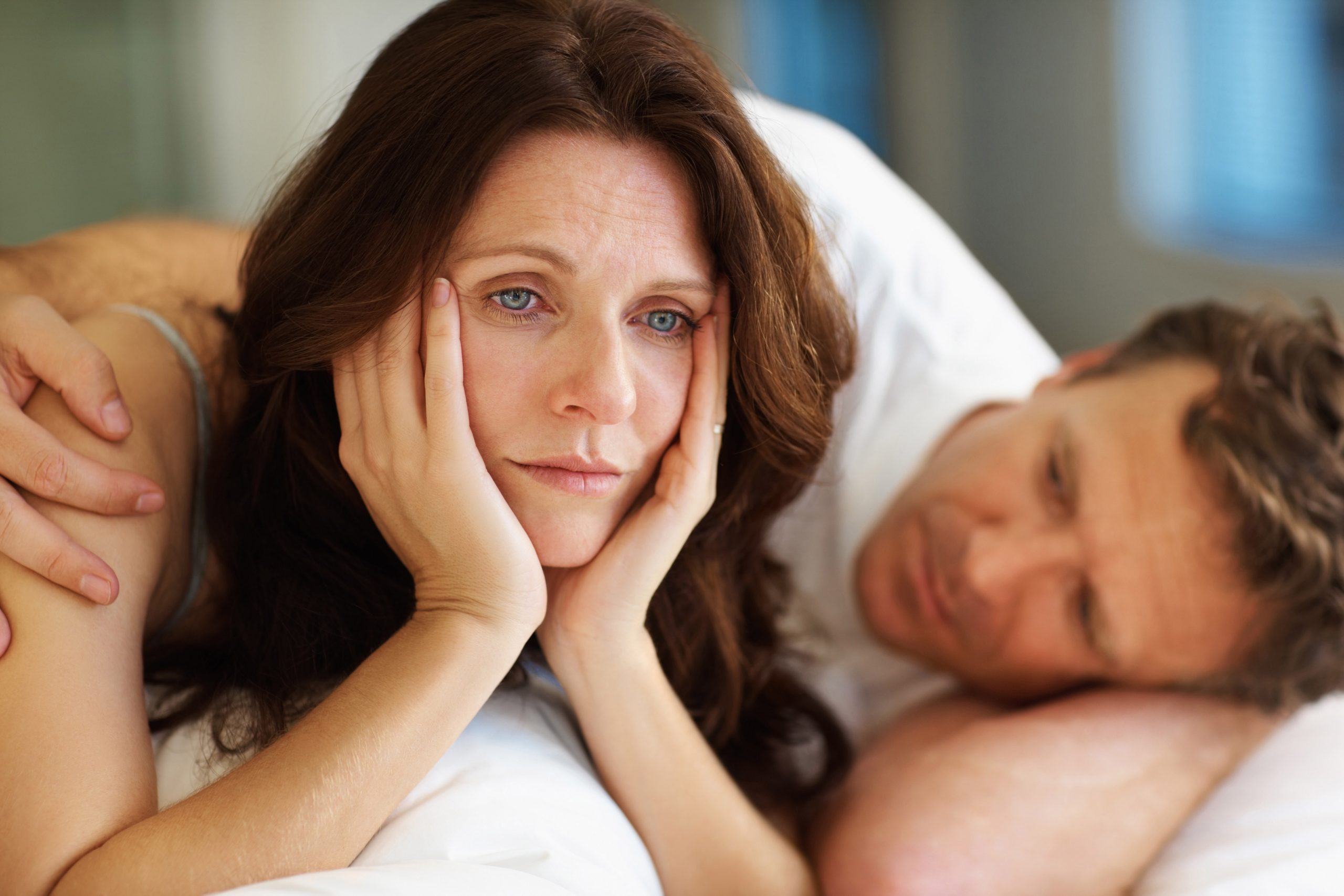
Female sexual disorder: causes, symptoms, diagnosis and treatment
The sexual response, in both women and men, consists of two separate phases: the arousal phase characterised by a localised vasocongestive reaction (vascular dilation of the genital organs, vaginal lubrication, swelling and reddening of the vaginal walls) and the orgasmic phase due to an involuntary reaction of certain genital muscles producing a strong sensation of pleasure
The fundamental characteristic of female arousal disorder is the persistent or recurrent inability to achieve, or to maintain until the completion of sexual activity, an adequate reaction of sexual arousal with lubrication-tumescence.
Female arousal disorder can be primary (the arousal phase has never been experienced in any situation and with any partner), secondary (the arousal phase, at least to some extent, has been experienced in the past), generalised (arousal is inhibited in all situations and with all partners) or situational (arousal is inhibited only in certain situations and with certain partners).
Very often those who suffer from a female arousal disorder also suffer from orgasmic dysfunction
There are, however, cases in which the orgasmic reaction remains unchanged following clitoral stimulation or coitus in the absence of arousal.
In this case, therefore, orgasm can be experienced without overt lubrication.
Women who suffer from difficulties with arousal are essentially devoid of sexual sensation, derive very little erotic pleasure from stimulation, and in some cases none at all.
On a physiological level, they show no signs of genital vasocongestion in response to sexual stimulation, or react only partially, with slight lubrication, to mechanical stimulation of the penis in the vagina.
Women with ‘non-reactive’ arousal disorder experience considerable discomfort and interpersonal difficulties and regard the sexual experience as a hard task.
Emotional reactions range from deep distress to indifferent acceptance of their condition.
The female sexual reaction depends on physiological functionality (anatomically intact reproductive organs, adequate vascularisation of these organs, functional nerve regulation of the genitals and normal hormonal situation).
However, it is little vulnerable to physical factors such as disease and ageing but, on the contrary, is greatly influenced by psychological factors.
These include insufficient stimulation, difficulty in communicating one’s erotic needs to one’s partner, difficulty in abandoning oneself during sexual intercourse, thus acting as a ‘spectator’ and becoming a judge of one’s own sexual performance.
These mental concerns make it impossible for women to indulge in their own erotic experiences and thus adequate sexual arousal
Deeper psychological factors such as fear, shame and guilt due to a repressive upbringing, conflicts over the woman’s independence, fear of men, fear of losing control or fear of rejection can also intervene.
All these elements trigger emotional reactions that prevent the relaxation and surrender on which a good female arousal reaction depends.
The aim of therapy is, therefore, to facilitate the woman’s surrender to sexual experiences by changing the system in which she functions
The therapist tries to achieve this by encouraging the search for inexhaustible, relaxed and sensual situations that allow the natural unfolding of the sexual reaction during intercourse.
The couple is encouraged to openly communicate each other’s sexual feelings and desires: this communication will foster the creation of the right environment for female arousal.
In addition, the systematic prescription of various sexual and erotic experiences is highly effective in removing some immediate obstacles to sexual functioning.
Generally, during treatment, a specific sequence of sexual tasks is proposed: sensual focalisation exercises, genital stimulation exercises and ‘non-existent’ coitus.
The main pharmacological therapies for female arousal disorder, sometimes useful as an aid to psychological intervention, are oestrogen-based hormonal therapies, which improve lubrication and vaginal wall thickness, or testosterone-based therapies, which are supposed to increase arousability.
Read Also
Emergency Live Even More…Live: Download The New Free App Of Your Newspaper For IOS And Android
Sexual Disorders: An Overview Of Sexual Dysfunction
Sexually Transmitted Diseases: Here’s What They Are And How To Avoid Them
Sexual Addiction (Hypersexuality): Causes, Symptoms, Diagnosis And Treatment
Do You Suffer From Insomnia? Here’s Why It Happens And What You Can Do
Erotomania Or Unrequited Love Syndrome: Symptoms, Causes And Treatment
Sexual Aversion Disorder: The Decline In Female And Male Sexual Desire
Recognising The Signs Of Compulsive Shopping: Let’s Talk About Oniomania
Web Addiction: What Is Meant By Problematic Web Use Or Internet Addiction Disorder
Video Game Addiction: What Is Pathological Gaming?
Pathologies Of Our Time: Internet Addiction
When Love Turns Into Obsession: Emotional Dependency
Internet Addiction: Symptoms, Diagnosis And Treatment
Porn Addiction: Study On The Pathological Use Of Pornographic Material
Compulsive Shopping: Causes, Symptoms, Diagnosis And Treatment
Facebook, Social Media Addiction And Narcissistic Personality Traits
Developmental Psychology: Oppositional Defiant Disorder
Pediatric Epilepsy: Psychological Assistance
TV Series Addiction: What Is Binge-Watching?
The (Growing) Army Of Hikikomori In Italy: CNR Data And Italian Research
Anxiety: A Feeling Of Nervousness, Worry Or Restlessness
What Is OCD (Obsessive Compulsive Disorder)?
Nomophobia, An Unrecognised Mental Disorder: Smartphone Addiction
Impulse Control Disorders: Ludopathy, Or Gambling Disorder
Gambling Addiction: Symptoms And Treatment
Alcohol Dependence (Alcoholism): Characteristics And Patient Approach
Exercise Addiction: Causes, Symptoms, Diagnosis And Treatment
Schizophrenia: Symptoms, Causes And Predisposition
Schizophrenia: What It Is And What The Symptoms Are
From Autism To Schizophrenia: The Role Of Neuroinflammation In Psychiatric Diseases
Schizophrenia: What It Is And How To Treat It
Schizophrenia: Risks, Genetic Factors, Diagnosis And Treatment
Bipolar Disorder (Bipolarism): Symptoms And Treatment
Psychosis (Psychotic Disorder): Symptoms And Treatment
Hallucinogen (LSD) Addiction: Definition, Symptoms And Treatment
Compatibility And Interactions Between Alcohol And Drugs: Useful Information For Rescuers
Fetal Alcohol Syndrome: What It Is, What Consequences It Has On The Child
Alcoholic And Arrhythmogenic Right Ventricular Cardiomyopathy
About Dependence: Substance Addiction, A Booming Social Disorder
Cocaine Addiction: What It Is, How To Manage It And Treatment
Workaholism: How To Deal With It
Heroin Addiction: Causes, Treatment And Patient Management
Childhood Technology Abuse: Brain Stimulation And Its Effects On The Child
Post Traumatic Stress Disorder (PTSD): The Consequences Of A Traumatic Event
Schizophrenia: Causes, Symptoms, Diagnosis And Treatment


